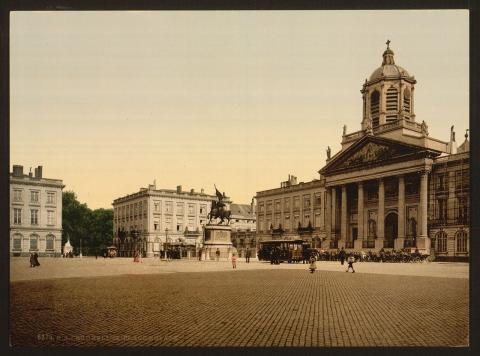During the 19th century, the population of Brussels grew considerably; from about 80,000 to more than 625,000 people for the city and its surroundings. The Senne had become a serious health hazard, and from 1867 to 1871, under the tenure of the city's then-mayor, Jules Anspach, its entire course through the urban area was completely covered over. This allowed urban renewal and the construction of modern buildings of Haussmann-esque style along grand central boulevards, characteristic of downtown Brussels today. Buildings such as the Brussels Stock Exchange (1873), the Palace of Justice (1883) and Saint Mary's Royal Church (1885) date from this period. This development continued throughout the reign of King Leopold II. The International Exposition of 1897 contributed to the promotion of the infrastructure. Among other things, the Palace of the Colonies [fr] (today's Royal Museum for Central Africa), in the suburb of Tervuren, was connected to the capital by the construction of an 11-km long grand alley.
Bædeker Belgium and Holland (1869) Route 9 page 55
